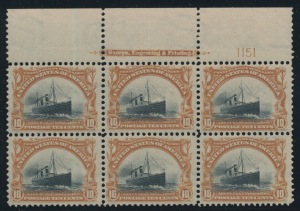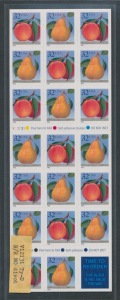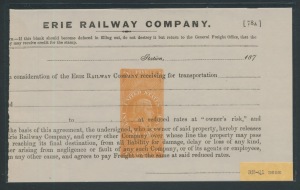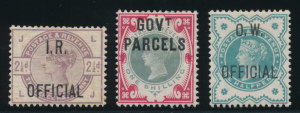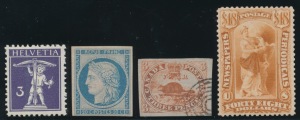 One of my first professional philatelic tasks, some forty years ago, was to assemble old correspondences for sale. You saw these more in those days than you do today, but what they were were large selections of letters that had been sent between correspondents over a period of years. Usually these were things like weekly letters between brothers and sister or parents and children who fate and circumstances had parted. Remember, in 1860, if your daughter and her husband moved from Ohio to California, the high probability was that you would never see her again. Her letters became a very real record of what was left of the relationship. They were saved and cherished and reread. And often these correspondences were kept in families long after the correspondents had passed away. Philatelists and postal historians collected them because they usually had the envelopes with stamps and postal markings. Such correspondences represented the intersection of philately and the real world and were actively
One of my first professional philatelic tasks, some forty years ago, was to assemble old correspondences for sale. You saw these more in those days than you do today, but what they were were large selections of letters that had been sent between correspondents over a period of years. Usually these were things like weekly letters between brothers and sister or parents and children who fate and circumstances had parted. Remember, in 1860, if your daughter and her husband moved from Ohio to California, the high probability was that you would never see her again. Her letters became a very real record of what was left of the relationship. They were saved and cherished and reread. And often these correspondences were kept in families long after the correspondents had passed away. Philatelists and postal historians collected them because they usually had the envelopes with stamps and postal markings. Such correspondences represented the intersection of philately and the real world and were activelyMonthly Archives: January 2018
- Posted January 30, 2018Read more »
 One of my first professional philatelic tasks, some forty years ago, was to assemble old correspondences for sale. You saw these more in those days than you do today, but what they were were large selections of letters that had been sent between correspondents over a period of years. Usually these were things like weekly letters between brothers and sister or parents and children who fate and circumstances had parted. Remember, in 1860, if your daughter and her husband moved from Ohio to California, the high probability was that you would never see her again. Her letters became a very real record of what was left of the relationship. They were saved and cherished and reread. And often these correspondences were kept in families long after the correspondents had passed away. Philatelists and postal historians collected them because they usually had the envelopes with stamps and postal markings. Such correspondences represented the intersection of philately and the real world and were actively
One of my first professional philatelic tasks, some forty years ago, was to assemble old correspondences for sale. You saw these more in those days than you do today, but what they were were large selections of letters that had been sent between correspondents over a period of years. Usually these were things like weekly letters between brothers and sister or parents and children who fate and circumstances had parted. Remember, in 1860, if your daughter and her husband moved from Ohio to California, the high probability was that you would never see her again. Her letters became a very real record of what was left of the relationship. They were saved and cherished and reread. And often these correspondences were kept in families long after the correspondents had passed away. Philatelists and postal historians collected them because they usually had the envelopes with stamps and postal markings. Such correspondences represented the intersection of philately and the real world and were actively - Posted January 29, 2018Read more »
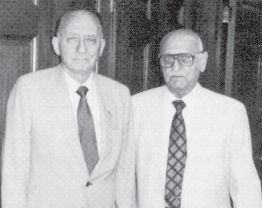 Raymond Weill, who died over ten years ago at the age of ninety, was a dealer in the very old time tradition. He and his brother Roger joined their father in their New Orleans stamp business in 1932. Although Weill began as a full range stamp dealer, his business very quickly moved into the higher end of the market, dealing only in rarities. The Weill brothers handled many Airmail Inverts and at one time owned as many as twenty of them. They sold the famed Post Office Mauritius cover, had a special interest in St. Louis Bears postmaster Provisionals (their family had originally been from St Louis), and were the purchasers of the famous Phillip Ward stock in 1960, which in its time was the finest stock of rarer United States Stamps in existenceAt any
Raymond Weill, who died over ten years ago at the age of ninety, was a dealer in the very old time tradition. He and his brother Roger joined their father in their New Orleans stamp business in 1932. Although Weill began as a full range stamp dealer, his business very quickly moved into the higher end of the market, dealing only in rarities. The Weill brothers handled many Airmail Inverts and at one time owned as many as twenty of them. They sold the famed Post Office Mauritius cover, had a special interest in St. Louis Bears postmaster Provisionals (their family had originally been from St Louis), and were the purchasers of the famous Phillip Ward stock in 1960, which in its time was the finest stock of rarer United States Stamps in existenceAt any - Posted January 26, 2018Read more »The Washington Bicentennial set is over 80 years old. Issued to commemorate the two-hundredth anniversary of the first President's birth, the set was issued on January 1, 1932. It has always been a popular set and has more or less been the breaking point between modern and classic US philately. Stamp issues before 1932 include the Washington-Franklins, the early Bureau issues, Bank Notes, and nineteenth century issues. All of these are difficult specialized stamps. After 1932, US philately is far more face different than it was before. By 1932, philately was enjoying similar popularity to what it enjoys today, and mint stamps were put away is large quantities. Because of this, the price per mint stamp or set in the post-1932 period is far less than it is for stamps before this, and the postage value of the stamp represents a far higher percentage of the selling price than it does on earlier stamps. Without really knowing why, many collectors pause when they get back
- Posted January 25, 2018Read more »
Collectors and dealers of the 1930s and 1940s looked at the obstacles to increasing the popularity of US philately and decided that unnecessary complexity was off-putting to new entrants to the hobby. This feeling was created by four things. First, the classic one cent and ten cent 1851 with their different minor plate types being elevated into major catalog number status was felt to be off-putting, creating major rarities (such as Scott #5) where the same type of variety of a more minor country than the US might not even be listed. Second, there were the numerous minor shade varieties of the Nineteenth Century that received major number status. The colors of the 5c 1857 (Scott# 27, 28, 28A, 29, 30, 30A) all had spaces in the Scott album. Many were rare and need an expert to determine them from much more common shades that look very much alike, even to the trained eye. And third, the paper and shade varieties of the Bank Note issues (Scott # 134-218) created many varieties with appeal
- Posted January 23, 2018Read more »Each Country has quirky collecting habits related to how their stamps were printed and to the marginal markings that originally contained printer's information or advertising. Israeli collectors collect their stamps with tabs, which are inscriptions that appear in the margins and which are collected attached to the stamps themselves. French collectors collect milliseme pairs, which are margin pairs with plate numbers between the two stamps. These pairs are from large sheets that were later cut into panes to be sold at the Post Office. British collectors collect gutter pairs with color registration markings-these are called traffic light gutter pairs because of the colorful display in the margins.The most popular and significant of all marginal
- Posted January 22, 2018Read more »
 Unbeknownst to a mass of collectors, one of the major changes brought about in our hobby as a result of the Internet age is greater democratization. In the pre-1900 period, philatelic organizations didn't count for much- there were few of them, and they had few members. The American Philatelic Society began to become powerful in the 1950s, and membership in the society became critical to success as a stamp collector or dealer. Stamp insurance was very difficult to obtain back then if you weren't an APS member, as APS stamp insurance was not only inexpensive but had expansive coverage limits and easy underwriting requirements. In this period too, most better stamps were sold at Public Auction, and extensive philatelic references were required by most auctioneers before your bids would even be accepted. APS membership provided the credentials that collectors and dealers alike needed to vet the transactions that were necessary to the hobby. As the societies became powerful,
Unbeknownst to a mass of collectors, one of the major changes brought about in our hobby as a result of the Internet age is greater democratization. In the pre-1900 period, philatelic organizations didn't count for much- there were few of them, and they had few members. The American Philatelic Society began to become powerful in the 1950s, and membership in the society became critical to success as a stamp collector or dealer. Stamp insurance was very difficult to obtain back then if you weren't an APS member, as APS stamp insurance was not only inexpensive but had expansive coverage limits and easy underwriting requirements. In this period too, most better stamps were sold at Public Auction, and extensive philatelic references were required by most auctioneers before your bids would even be accepted. APS membership provided the credentials that collectors and dealers alike needed to vet the transactions that were necessary to the hobby. As the societies became powerful, - Posted January 22, 2018Read more »Confederate States philately has always enjoyed enormous popularity. The stamps are interestingly printed, served a real postal purpose, and the story behind the stamps has real philatelic appeal- large nation, rent by discord, one section withdraws from union to preserve the ability to own human beings as property, the other side fights to retain the union and end slavery. If it wasn't true it would seem unbelievable.
- Posted January 22, 2018Read more »
There are four tiny European states that maintained independence into modern times, more as an historic quirk than for any other reason. As Europe progressed through the centuries, hundreds of principalities and smaller sovereign units that had existed were merged into the German, Austro-Hungarian and Italian Empires at the end of the Nineteenth Century. This consolidation produced the geopolitical borders that we have today. Four tiny countries didn't join (or weren't forced to join) larger units, mostly because their isolation made them not worth the trouble. Now, they continue to exist mostly because they allow banking, tax, and sin advantages (e.g. gambling) that make them useful to the populations of the economic and military giants that surround them and which historically would have incorporated them. These four countries, which have made it into the twenty-first century, are Andorra (181 square miles, population 181,000), Liechtenstein (62 square miles, population 35,000), San Marino
- Posted January 22, 2018Read more »One of the more ironic things about specialized philately is that collectors are far more likely to collect older issues in a highly specialized degree than they are to collect more modern stamps in the same degree of detail. Penny Blacks are specialized by plate number. There were 12 plates- each of which can only be told by detailed examination against known plated stamps) and 240 positions on each sheet (one for each set of check letters) making 2880 collectible stamps of the first postage stamp alone. Of the Penny Red of 1841, the second GB stamp, there are tens of thousands of different collectible varieties. Collectors of modern stamps usually collect only one of each, but this is out of habit. Many collectible varieties of modern stamps exist, and collectors of United States should be aware of this. The decision of how specialized to make your collection is yours alone, but this decision is easier to make if you are informed about varieties that are available.
- Posted January 22, 2018Read more »The specialty area of United States Revenues may be the most fertile collecting specialty for collectors. Scott lists the general issue revenues which are interesting enough. But it is in the field of the specialty revenues where collectors have had the most fun. There are specialty Revenues for everything from Perfume Tax Stamps to Consular Office Revenues (which paid the tax on things like passports and visas), to even Marijuana Tax Stamps (which paid a tax on the illegal drug). Incidentally, Marijuana Tax Stamps were declared unconstitutional by the the Supreme Court as a form of self incrimination since it was illegal to sell marijuana without buying the stamps and paying the tax. But since it was illegal to sell pot anyway, this was ruled law enforcement double dipping. There are over thirty specialty revenues that the Scott catalog lists, and scores more of Scott unlisted revenue types— most of which are called "Tax Paids" and are excluded
- Posted January 22, 2018Read more »The first country to issue Official stamps was Great Britain. It did so at the same time that it issued the first stamp, the Penny Black. But Great Britain was scooped in one major aspect of Official stamps by the United States Post Office, and that was in the issuance of Departmental Officials— Officials for use by individual government departments. The United States issued its first Departmental Official in 1870 and Great Britain followed some ten years later.Official stamps are issued by postal agencies more as a form of accounting than because of any postal need. Most countries (including France, Belgium, Japan, indeed the vast majority of postal entities) have never issued Official Stamps. It's not that their government departments don't use
- Posted January 22, 2018Read more »
 Every field has its basic reading list, and people who have spent an enormous time in a particular field are apt to forget sometimes just how good some of the basics are. I have been rereading many of the philatelic works that I read as a young philatelist and am amazed at how interesting and timeless many of them are. At the top of this list is Nassau Street by Herman Herst.Herman "Pat" Herst Jr. (who got his nickname because he was born on St. Patrick's day) became a stamp dealer in the 1930s.
Every field has its basic reading list, and people who have spent an enormous time in a particular field are apt to forget sometimes just how good some of the basics are. I have been rereading many of the philatelic works that I read as a young philatelist and am amazed at how interesting and timeless many of them are. At the top of this list is Nassau Street by Herman Herst.Herman "Pat" Herst Jr. (who got his nickname because he was born on St. Patrick's day) became a stamp dealer in the 1930s. - Posted January 22, 2018Read more »
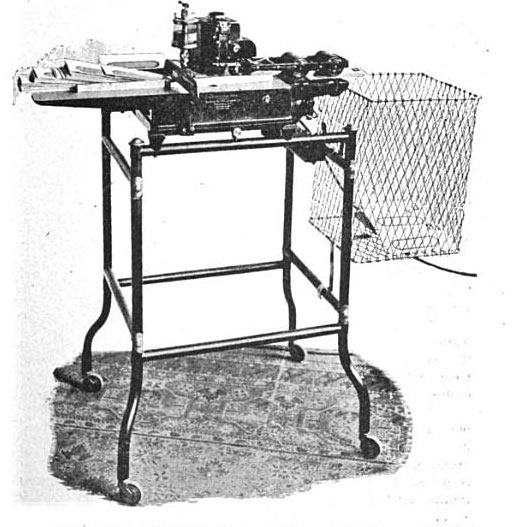 The original format in which stamps were issued was full sheets. As time went on, postal authorities began to produce stamps for sale in more convenient formats for postal users. In the era before postage meters (and now, pre-printed postage indices), coil stamps were issued as the preferred method of stamp purchases for large mailing houses. Issued in rolls (sometimes up to as many as 10,000 in a single roll), the mailing houses could place these large rolls in their mailing machines and lower their labor costs as these stamps were automatically affixed. Individuals could buy coils, too (and some countries, such as Sweden largely had coils as their preferred method of stamp production), but for the most part coils were produced mainly for business use.Booklets
The original format in which stamps were issued was full sheets. As time went on, postal authorities began to produce stamps for sale in more convenient formats for postal users. In the era before postage meters (and now, pre-printed postage indices), coil stamps were issued as the preferred method of stamp purchases for large mailing houses. Issued in rolls (sometimes up to as many as 10,000 in a single roll), the mailing houses could place these large rolls in their mailing machines and lower their labor costs as these stamps were automatically affixed. Individuals could buy coils, too (and some countries, such as Sweden largely had coils as their preferred method of stamp production), but for the most part coils were produced mainly for business use.Booklets - Posted January 22, 2018Read more »
Stamp design and messaging has changed over the course of the last one hundred years. For most of the nineteenth century, stamp design was simple and rarely changed. New issues were uncommon and Commemoratives unheard of. Design was meant to identify the label quickly as an official government item, a bearer bond so to speak, which indicated a prepaid service of a certain amount. The denomination needed to be clearly indicated (and most countries used color coding to help with denomination recognition- on US stamps the first class (3c) rate was red and the transcontinental rate (10c) was green), and the design needed to indicate the country of origin.Every country except Great Britain has always put its name on its postage stamps. But even in - Posted January 22, 2018Read more »
 Historians of the ancient world often have few sources to go on and much of our understanding of what happened before the last few centuries, for which written documents are common, is by inference. Thus we know of Phoenician settlements throughout the Mediterranean because of obelisks found on different sites inscribed with that language or by shards of pottery in Phoenician style. From coins we can infer that Hadrian was not always loyal to his wife, and all of what we know of Alexander is from histories written hundreds of years after his death when legend and lore surely colored fact.
Historians of the ancient world often have few sources to go on and much of our understanding of what happened before the last few centuries, for which written documents are common, is by inference. Thus we know of Phoenician settlements throughout the Mediterranean because of obelisks found on different sites inscribed with that language or by shards of pottery in Phoenician style. From coins we can infer that Hadrian was not always loyal to his wife, and all of what we know of Alexander is from histories written hundreds of years after his death when legend and lore surely colored fact. - Posted January 22, 2018Read more »Readers of this blog are aware by now of how fashions change in philately. Used stamps were comparatively more popular fifty years ago than they are today. Covers and postal history were essentially uncollected until about 1920, had their peak around 1980, and have since fallen to a secure but niche collecting status. Blocks and multiples were once part of everyone's collection; today a single will do.
 No change in philatelic tastes though has been more profound than the current affection for original gum on Nineteenth Century stamps. One hundred years ago, collectors were routinely
No change in philatelic tastes though has been more profound than the current affection for original gum on Nineteenth Century stamps. One hundred years ago, collectors were routinely - Posted January 22, 2018Read more »
 For many years, few stamp collections required many steps be taken for their security. Few collections were valuable enough for the average burglar to bother with, and even if damaged by fire, the low value of stamps in general meant that they were easy to replace. But the rise in philatelic values in the last fifteen years, both actual and relative, to the rise in prices in general has made a good stamp collection eagerly sought after by even common criminals and difficult to replace in the case of fire loss.Most people never experience a house fire, and even though burglary rates are alarmingly high, most residential areas have few, and these are generally of the "steal the silver and run" kind. Still, statistics say that the average person can expect to
For many years, few stamp collections required many steps be taken for their security. Few collections were valuable enough for the average burglar to bother with, and even if damaged by fire, the low value of stamps in general meant that they were easy to replace. But the rise in philatelic values in the last fifteen years, both actual and relative, to the rise in prices in general has made a good stamp collection eagerly sought after by even common criminals and difficult to replace in the case of fire loss.Most people never experience a house fire, and even though burglary rates are alarmingly high, most residential areas have few, and these are generally of the "steal the silver and run" kind. Still, statistics say that the average person can expect to - Posted January 22, 2018Read more »
 In the 1940s and 1950s, the terror of the philatelic world was Elliot Perry. Perry was a knowledgeable philatelist but a personal horror. Every philatelic dispute was to him a holy crusade. A suggestion that his opinion wasn't formed on Olympus enraged him to the point that he never forgave the miscreant who doubted him. He had a dispute with Harry Konwiser, another prominent philatelist, that may have started over a Confederate cover, but as was clear in their telling of it, neither retained much sense over what the dispute was originally about. The conflagration lasted decades and was public and acrimonious in the extreme. Perry made himself unassailable, not so much because he was so knowledgeable, but because he made the public price of disagreeing with him so very high. Eventually Perry passed on and is little remembered anymore.
In the 1940s and 1950s, the terror of the philatelic world was Elliot Perry. Perry was a knowledgeable philatelist but a personal horror. Every philatelic dispute was to him a holy crusade. A suggestion that his opinion wasn't formed on Olympus enraged him to the point that he never forgave the miscreant who doubted him. He had a dispute with Harry Konwiser, another prominent philatelist, that may have started over a Confederate cover, but as was clear in their telling of it, neither retained much sense over what the dispute was originally about. The conflagration lasted decades and was public and acrimonious in the extreme. Perry made himself unassailable, not so much because he was so knowledgeable, but because he made the public price of disagreeing with him so very high. Eventually Perry passed on and is little remembered anymore. - Posted January 10, 2018Read more »
Those of us who started in philately over thirty years ago remember H E Harris. Harris was the largest stamp dealer in the mid twentieth century, growing rapidly during the Great Depression with the Captain Tim radio show. Harris was a leading promoter of philately with album publishing and approvals so that by 1975 Harris had tens of thousands of customers and, it was argued, made more new collectors than the Post Office itself.
By 1975 Henry Harris was an old man and was ready to sell his business and the story of the demise of Harris tells us a lot about American business in the 1970s and 1980s. Harris sold his business to General Mills and as a young stamp dealer I had visions of General Mills promoting stamp collecting on the back of every box of Cheerios sold in America. But this was not to be. General Mills ran a late twentieth century venture capitalism division and it was this unit that bought Harris. Their goal was simple.


